
Prime Minister Pham Minh Chinh and delegates broke ground on the primary and secondary boarding school in Yen Khuong commune, Thanh Hoa . Photo: Duong Giang/VNA
Moreover, this event also shows how we prepare the human foundation for the years ahead in the context of the whole country looking towards the 14th National Party Congress with the core ideology: taking cultural and human development on par with economic, political and social development is not a slogan, but a series of specific, measurable actions in the farthest parts of the country. The groundbreaking ceremony of 72 inter-level boarding schools in phase 1 of the program is expected to be completed before the 2026-2027 school year, a milestone showing the determination to turn political will into concrete results.
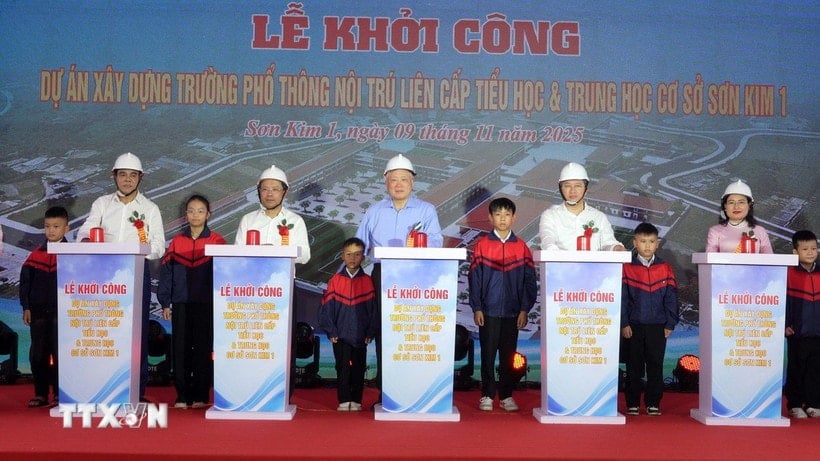
Permanent Deputy Prime Minister Nguyen Hoa Binh and delegates performed the groundbreaking ceremony for a border school project in Ha Tinh. Photo: Huu Quyet/VNA
New "social architecture" for border areas
Looking deeply into the components of the projects, we see that the “inter-level - boarding” model is not just an educational infrastructure solution. It is a new social architecture for the border area: classrooms - dormitories - dining halls - multi-purpose halls - libraries - synchronous technical infrastructure, with a scale of about 1,000 to more than 1,200 students per school, enough to create a “learning community cluster” - where children no longer have to cross streams during flood season, no longer sleep in temporary lodgings, where meals, sleep, health, hygiene, and safety are standardized according to a national standard.
Specific investment parameters in localities such as Lao Cai (4 schools this time with a total investment of 945 billion VND, scale of 28 - 36 classes/school), Lang Son (a project starting with more than 265 billion VND, floor area of over 24,000m²), or projects in the Northwest and Central Highlands regions... show that the problem has been carefully calculated to not only "have schools" but "have good schools", that is, to ensure the standard of level 2 facilities of the education sector, laying the foundation for real teaching quality.

Deputy Prime Minister Pham Thi Thanh Tra with students in the mountainous area of Lao Cai at the groundbreaking ceremony for the construction of four inter-level boarding schools on the Lao Cai border. Photo: VNA
The greatest significance of this decision lies in placing education in the key position of the border strategy. The border is not just a geographical line, but also the living space of ethnic communities - where identity is preserved, where "human security" and "cultural security" are intertwined. Investing in inter-level boarding schools in border communes is therefore investing simultaneously in social security, culture, security, and the economy. A Mong, Dao, Thai, Ede, M'nong child... can stay at school, study all day, eat in a clean, safe boarding school, have access to books, technology, sports, arts... will have a higher probability of staying in the education system, forming better basic competencies, and they themselves - not anyone else - will be the skilled labor force of the border region in the next 10 - 15 years. At that time, "keeping the land from the root" was no longer the slogan of the authorities, but the result of a social ecosystem where the school played a central role.
The second meaning is to narrow the inequality of benefits. In lowland areas, children can go to extra classes, learn foreign languages, and digital skills; in highland areas, a nutritious lunch is sometimes a dream. Boarding - if well organized - is a tool to equalize opportunities. The state will "bear" the costs that poor families cannot afford, creating conditions for a real learning program instead of "roll call".
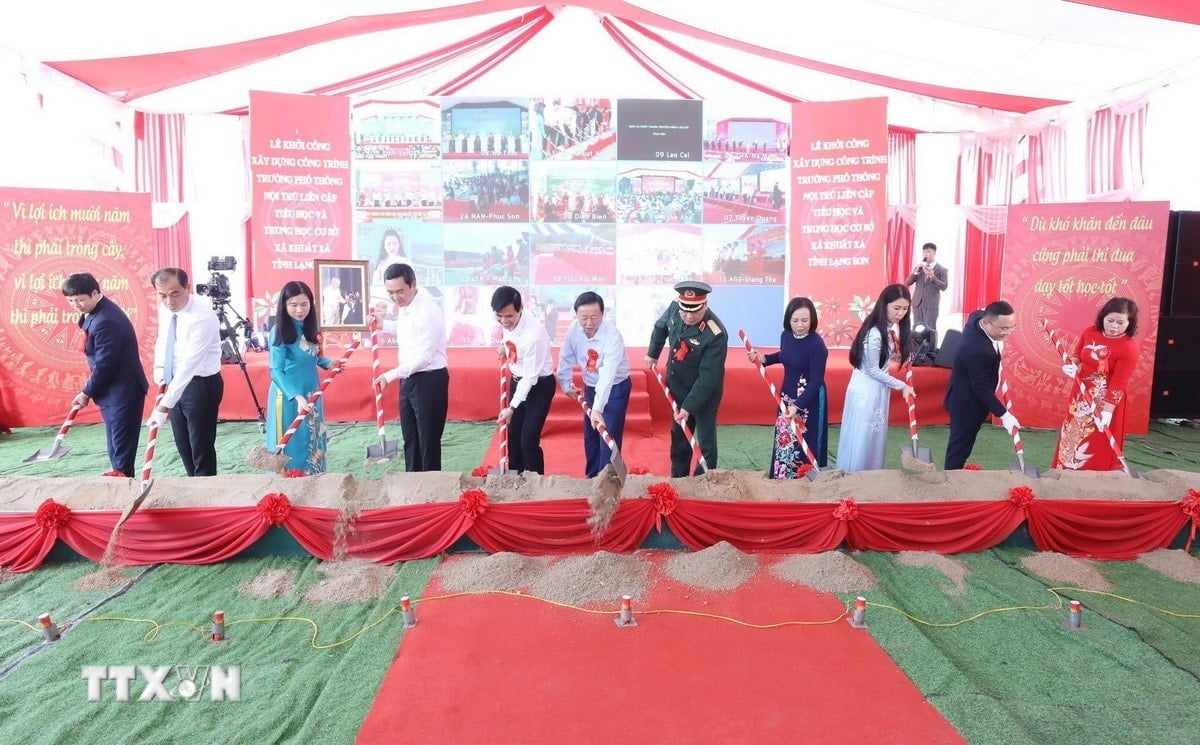
Deputy Prime Minister Tran Hong Ha and delegates performed the groundbreaking ceremony for the inter-level boarding school in Lang Son. Photo: Anh Tuan/VNA
The third meaning belongs to culture in a deeper sense: boarding schools in border areas should not and must not be "copycats" of the delta. They must be integrated cultural and educational spaces, where identity is respected, the mother tongue is supported alongside standard Vietnamese and foreign languages, where local knowledge (cultivation, weaving, traditional musical instruments, rituals, indigenous knowledge of forests and water) enters the classroom as proud content.
At that time, boarding schools do not “melt” differences, but become places of “harmony”, building a confident “identity” for the young generation in border areas. Right from the design, construction and operation stages, we should invite artisans, village elders, and local cultural researchers to participate; so that the school yard has the sounds of Khen and Then; so that the library has bilingual books; so that meals have familiar dishes for children; so that traditional festivals have a place in the school calendar. That is the way to educate people.
"Launch pad" for equitable digital transformation
The fourth meaning is a “launching pad” for equitable digital transformation. The Draft Document of the 14th National Congress re-emphasizes the need to build a modern, equitable national education system according to the criteria of “standard - open - flexible”. Each inter-level boarding school in the border area should be designed as a “digital node”: with a stable internet connection, a computer room, a digital library, an online learning platform, the ability to organize simulation classes, basic STEM/STEAM, and a compact innovation - startup club. This is the way to open the way for digital knowledge to flow to where it is needed most. It is necessary to soon develop a set of minimum criteria for digital infrastructure for these schools, associated with retraining teachers in digital teaching.
These recommendations are completely compatible with the new Resolution on education - training and science - technology - innovation, as well as the vision of promoting cultural industry in the digital age, which has been discussed many times in the National Assembly over the past two years.
Fifth, this is a model of “seed investment” to activate local resources and transparent socialization. Synchronous state infrastructure investment is a necessary condition. A sufficient condition is an open operating mechanism for the business community, social organizations, and universities to “sponsor” each specific school, supporting equipment, learning materials, and extracurricular activities according to a public funding mechanism with supervision.
Sixth meaning, reset the standard of “good schools” for rural and mountainous areas. For a long time, we have talked a lot about “leaving no one behind”, but investment often falls into the trap of “leveling - thin - slow”. This time, focusing on border communes, choosing the inter-level - boarding model, synchronous investment according to level 2 standards, setting the goal of completing phase 1 before the 2026 - 2027 school year is a different way: focus - fast - thoroughly. It will create healthy pressure for the public school system in difficult areas to adjust to higher standards, instead of being satisfied with “minimum acceptable”.
Seventh meaning, from the cultural and human perspective: boarding schools in border areas can become “new cultural centers” - places connecting school knowledge with community life. At night, the dormitory can be a space for folk art activities; on weekends, the school yard can be a school market; the library can be a bilingual reading corner, connecting an open repository of scientific materials on ethnic culture. In many countries, it is the remote boarding schools that “brighten” the local cultural and artistic space.

Deputy Prime Minister Mai Van Chinh presents gifts to ethnic minority students in the border commune of Ia Rve at the groundbreaking ceremony of an inter-level general school in the border commune of Dak Lak. Photo: Ngoc Minh/VNA
Need for special attraction and treatment mechanism for teachers in border areas
From that vision, there are 3 things that should be included directly in the operational plan while the project is still in the foundation stage.
First, prepare the team. It is necessary to have a mechanism to attract and treat teachers in border areas specifically; a regular training and development package on ethnic culture, inclusive education, digital teaching, and school counseling skills; a rotation and mentoring program with pedagogical schools and standard schools in urban areas. Second, standardize the process of raising, teaching, and maintaining safety. Each school needs a set of procedures on nutrition, hygiene, epidemic prevention, food safety, and prevention of violence and abuse; a clear mechanism for reporting and handling incidents; and a network of volunteers and supportive parents. Third, create a network of professional and cultural "sponsorships". One urban school - one border school; one art troupe - one school art club; one technology enterprise - one STEM lab in the border area. If these three things are done, the boarding school will truly be a "second home".
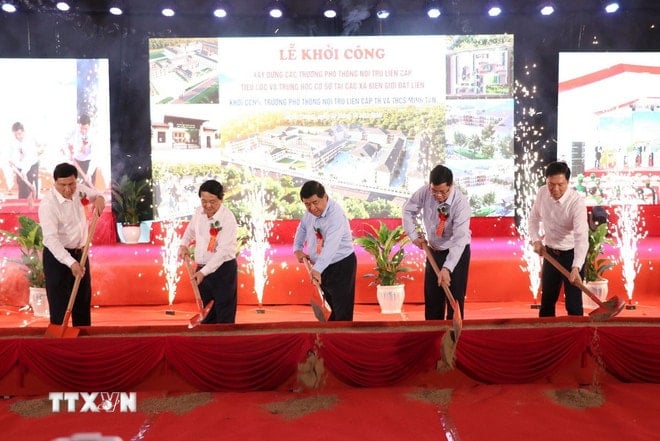
Deputy Prime Minister Nguyen Chi Dung and delegates performed the groundbreaking ceremony for the construction of an inter-level boarding school in the border commune of Minh Tan (Tuyen Quang). Photo: Duc Tho/VNA
We also need to face the challenges head-on. Boarding means children are away from their families, and are at risk of loneliness and culture shock if the protective institutions are not strong. The concentrated environment is also where a small mistake (food, disease, electrical safety) can have big consequences. Boarding also risks “urbanizing lifestyle” if there is a lack of cultural orientation. Therefore, along with material investment, there must be “soft investment”: a set of appropriate school ethics and lifestyle standards; identity education programs; student voice mechanisms; and the participation of parents and village elders.
Entering a new era by investing in people
As a member of the National Assembly, I would like to emphasize the direct connection between today's decision and the issues we are discussing for the 14th Congress.
Firstly, if we affirm that “culture and people are the foundation, resources, endogenous strength and great driving force, the regulating system of sustainable social development”, then border schools must be the specific “drop point” of that strategy: where human dignity, discipline, aesthetics, language, digital skills, and the desire to learn are nurtured every day.
Second, if we want “science, technology, and innovation” to become a pillar, then investing in border areas is the way to narrow the “digital gap” right from the beginning - because no national digital platform can be sustainable if it ignores the 15% of the population living in mountainous, remote, and isolated areas.
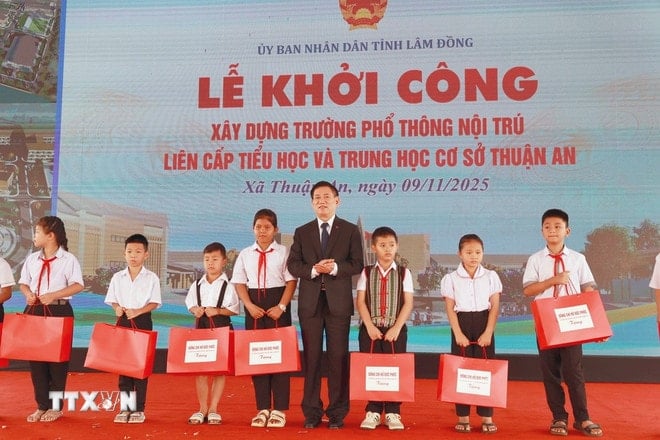
Deputy Prime Minister Ho Duc Phoc presents gifts to students in border areas who have overcome difficulties to study well at the groundbreaking ceremony of an inter-level boarding school in Lam Dong. Photo: Hung Thinh/VNA
Third, if the goal is “equality and fairness in access to public services”, there is no better measure than a child living in the border area having meals, sleep, classes, and opportunities to learn foreign languages and code equivalent to their peers in the inner city.
Fourth, if we talk about “human security - cultural security”, no one can protect the border better than well-educated citizens who are proud of their own identity.
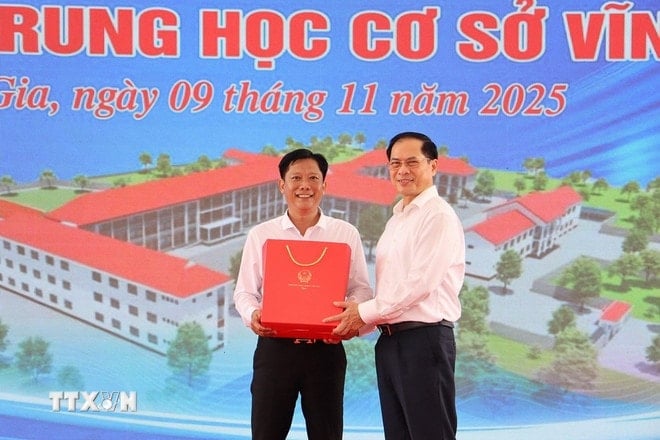
Deputy Prime Minister Bui Thanh Son presents gifts to Luong An Tra Secondary School at the groundbreaking ceremony for schools in border communes of An Giang province. Photo: Le Huy Hai/VNA
And above all, they are the bricks that build the belief that: ethnic minority children can grow up in learning conditions that are not inferior to anyone else; that the border is not just a geopolitical fence, but a lowland filled with knowledge, culture, and opportunity; that when the State says "no one is left behind", the people can see and touch that with a spacious school, a warm dormitory, a library that is lit up on Saturday nights. At the national level, this is also an affirmation: Vietnam enters a new era by investing most seriously in the most fundamental thing - people.
The images from the morning of November 9 will be a vivid demonstration of a consistent development mindset: taking difficult areas as a place to test policy quality, taking children as the center, taking culture and education as a long-term driving force. Hopefully, in the action program after the Congress, the content of "inter-level boarding schools in border communes" will become a pillar of the development strategy for ethnic minority and mountainous areas, closely linked with digital transformation of education, local cultural industry, eco-cultural tourism, smart agriculture; at the same time, replicating the model to island communes and coastal areas with many difficulties.
Once the groundbreaking event is complete, the rest depends on the discipline of execution, transparency, community participation and the hearts of the teachers. If we do it right and do it well, when the 14th Congress closes, in the term summary report, we will certainly have the happy eyes of the border children on the first day of school at the new school - eyes that tell us that the choice to invest in people is never wrong.
Source: https://daibieunhandan.vn/tu-cac-truong-hoc-vung-bien-den-tam-nhin-dai-hoi-xiv-cua-dang-10395027.html












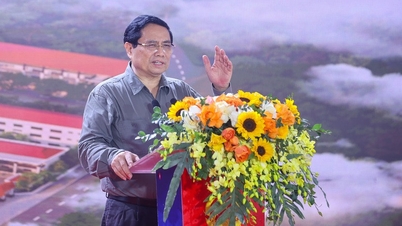



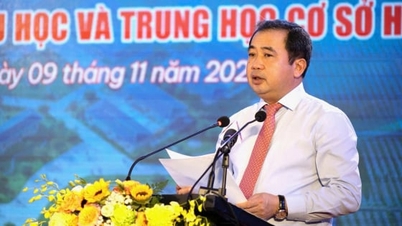



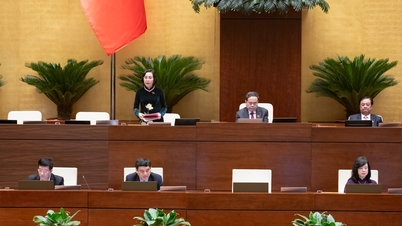
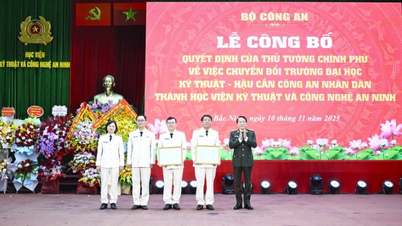



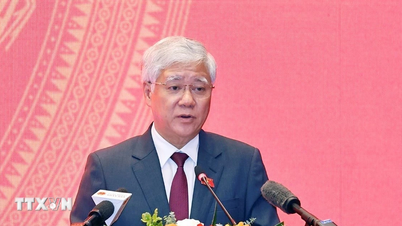

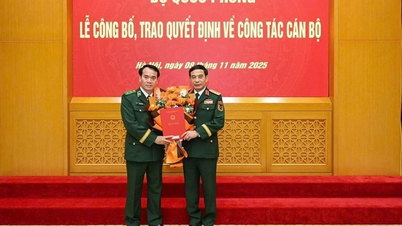





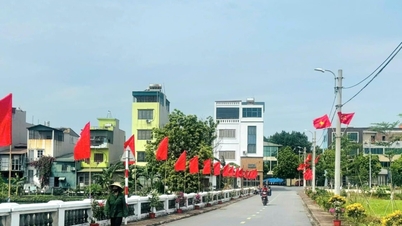
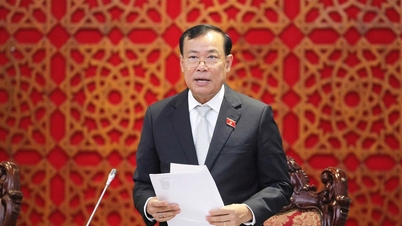



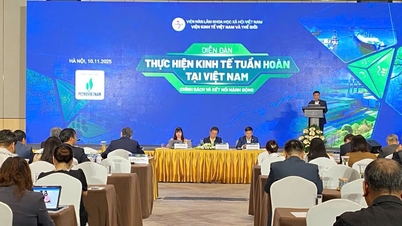











































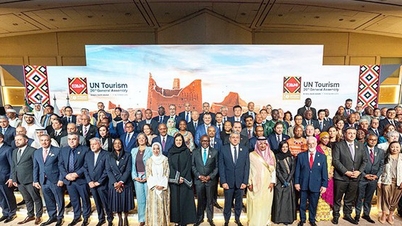







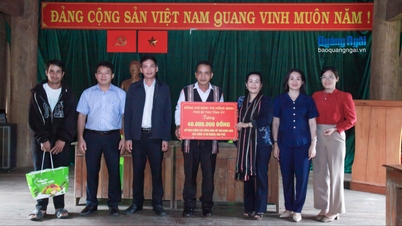





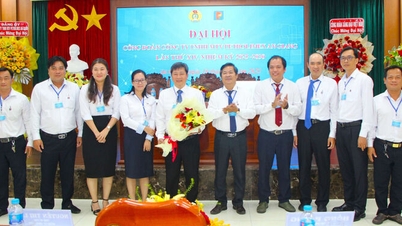



![Dong Nai OCOP transition: [Article 3] Linking tourism with OCOP product consumption](https://vphoto.vietnam.vn/thumb/402x226/vietnam/resource/IMAGE/2025/11/10/1762739199309_1324-2740-7_n-162543_981.jpeg)









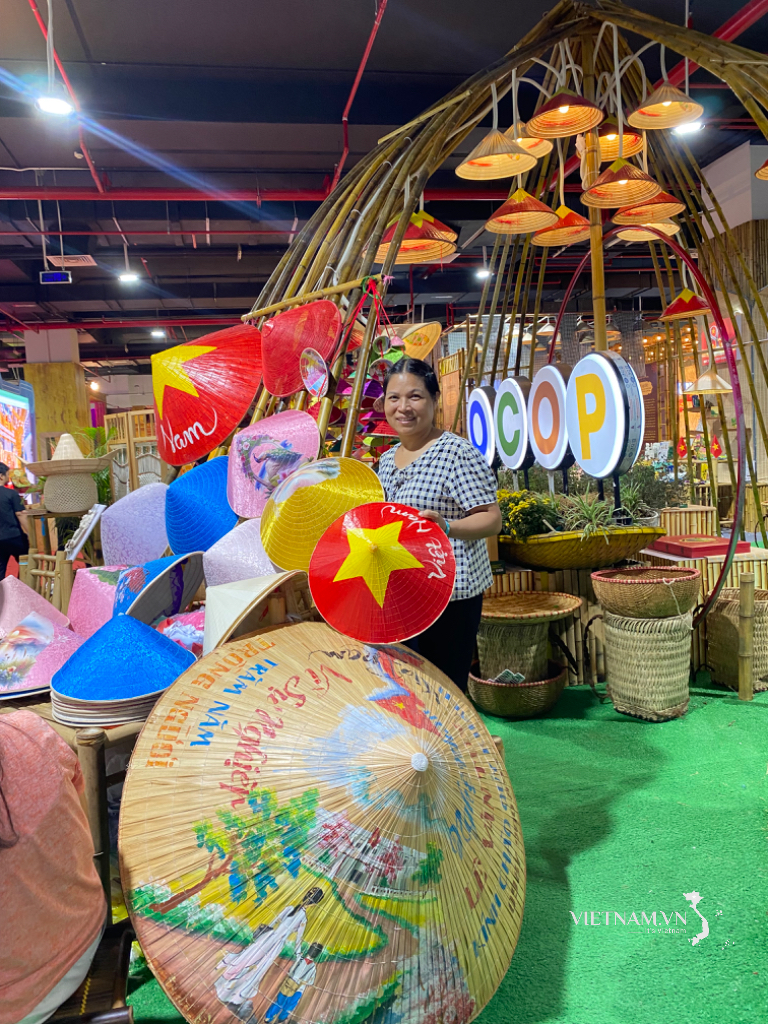



Comment (0)